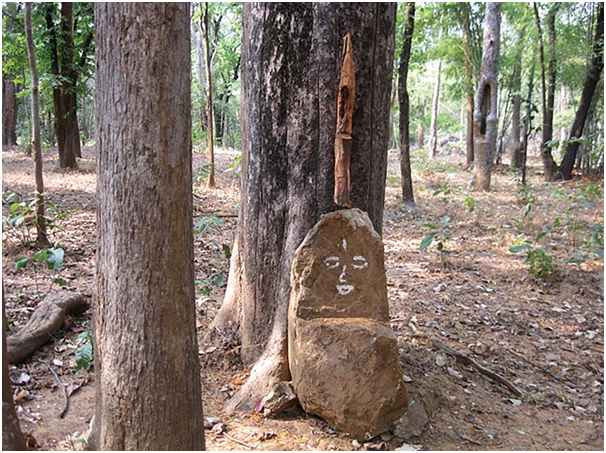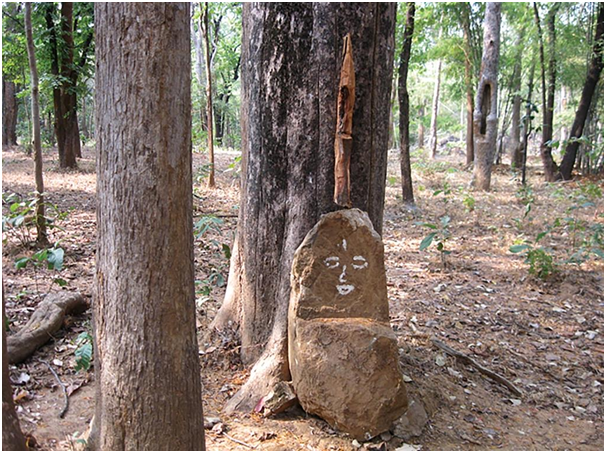Sacred Groves
Context: Once found in plenty across the country, sacred groves have shrunk in many places due to rampant encroachments, the spread of invasive species, and unfettered human interference.
What are sacred groves?
- Sacred Groves are the tracts of virgin forests left untouched by the local inhabitants and protected by them due to their culture and religious beliefs
- They are repositories of our rich biodiversity; they are also the last bastion where the rich culture and the customs of the indigenous people are still preserved.
Different Traditions related to Sacred groves in India?
Meghalaya
- They are unique features of Khasi and Jaintia Hills. They are the natural treasure serving as house of biodiversity and a refuge for many endemic,endangered and rare taxa.
- A baseline floristic survey revealed the presence of at least 514 species representing 340 genera and 131 families in these sacred groves.
- The local tribal people believe that ‘U Basa’ or goddess dwell among these thick and virgin forests. Various rites and rituals are performed periodically in these forests
Western Ghats
- Sacred groves are believed to be at least two millennia old; they are called kavu in Kerala, devaru kadu in Karnataka’s Kodagu district and devrai in Maharashtra.
- Deities can be animal or human: tigers, serpents, gaur, gods, and goddesses, including Ayyappa and Durga.
- Trees in the Iringole grove in Kerala’s Ernakulam district, for instance, are considered sub-deities of the main goddess, Vanadurga (forest Durga)
- In Kasaragod Footwear is not permitted and people step in, barefoot. The huli devaru, which Gowda and his Kare Vokkaliga community revere, resides in a kan, or a sacred grove, — a forest patch dedicated to specific deities and protected by local communities.
- In north Malabar, the colourful and fierce Theyyam ritual is symbolic of the forest god, who comes once a year to bless the villagers.
Rajasthan
- Sacred groves are called “orans” in Rajasthan. The state’s Bishnoi community is well-known for their strong beliefs in saving animals and plants.
- No one can destroy or cut trees in these sacred groves. Collection of dried wood is also not allowed.
- Sacred groves not only unify communities but also create a forum for festivals, dialogues, and other social events.
Benefits of Sacred Groves
- The groves are a treasure trove of medicinal plants such as sarpagandha (Indian snakeroot Rauvolfia serpentina ) and ekanayaka (a woody climber), which they harvest for common ailments.
- Indian Institute of Science studied the water dynamics near a sacred grove that had primaeval vegetation (such as old evergreen trees), and a disturbed, heavily-extracted non-sacred forest in northern Karnataka.
- They found that farmers in valleys downhill of the grove could cultivate water-demanding plantation crops like areca nut, while farmers near the non-sacred forest could cultivate only monsoon-fed paddy.
- “Open wells in houses near the grove had consistently higher water levels than those near disturbed forest
- Apart from functions including carbon storage, nutrient recycling and soil conservation, these forests are also biodiversity-rich.
- They play a key role in protecting threatened ecosystem.Fore.g. Myristica swamps and Semecarpus kathlekanensis in northern Karnataka
- Sacred groves are crucial corridors for wildlife. Kathlekan is home to the largest population of the critically endangered lion-tailed macaque in southern India.
Threats
- Sacred groves in Meghalaya are now increasingly coming under threat as the tribal way of life changes.
- The area under sacred groves is also shrinking and quite a few have been turned into degraded forests.
- Some sacred groves, though protected in the past, have fallen prey to encroachments and degradation due to decline of the very social and ethical values that had helped them to thrive.
- The newer generations do not believe in the methods their ancestors followed to maintain the fragile ecosystem and biodiversity.
- Development works and deforestation are other possible causes of degradation of sacred groves.
Way forward
- Applied Environmental Research Foundation has used many micro strategies to protect and manage the sacred groves.
- These include designing and developing various community-based programmes to revive community interest in conservation and giving knowledge and training regarding the ecology of these groves.
| Practice Question
1. What are sacred groves? How did they help in sustainable living and forest conservation? |





